Goat farming is a very common and popular business in many countries throughout the world. It is not a new business idea, rather it is a traditional business and people are raising goats from the ancient time. Commercial goat rearing is a profitable business and rural people have been raising these small farm animals mainly for earning money.
Both commercial and small scale goat farming has become a profitable business in many areas. Goat production requires a very low investment, because goats are cheap as compared to other large livestock animals. Goats are known for their multi-functional utility. Commercial goat farming business is contributing greatly to the economy and nutrition demand.
Goats are multi-functional animals. You can produce a wide variety of products from goats, such as milk, meat, fiber, manure etc. Goat’s milk is used for producing full cream goat powder, skimmed goat milk powder, goat butter, goat milk cream, fresh goat milk etc. Goat meat is a great source of animal protein which is very popular, tasty, nutritious and also highly priced. Goat wool is being used in many purposes, and skin of goat plays a vital role in leather industry.
Global population is increasing gradually, and total food demand is also increasing. Commercial goat production can help to fight the food scarcity. Along with making profits, goat farming is a good way of employment and people can easily start this business.
What is Goat Farming?
Before discussing more about this business, we need to know about what is goat farming. Goat farming means ‘raising and breeding domestic goats for the purpose of meat, milk, fiber and skin production’.

Why Goat Farming is a Good Business for Farmer?
Goat farming is a very good business for farmers for many reasons. Goats are smaller sized animals, and they require relatively less space, food and other caring and management. But goat products have good demand and value in the market.
Among the goat products, goat meat has high demand and value in both local and international market. In the United States, meat goat farming is very popular and found all over the country. But most of the meat goat production occurs in the Southeast, and Texas is the primary producer of meat goats in the United States.
However, starting a commercial goat farming business is relatively easy and simple. It requires less investment, less labor, less food and relatively less caring and other management as compared to other livestock farming business. But goat products have very high demand and value in the market. So, it can be a great business for the farmers for making good profits.
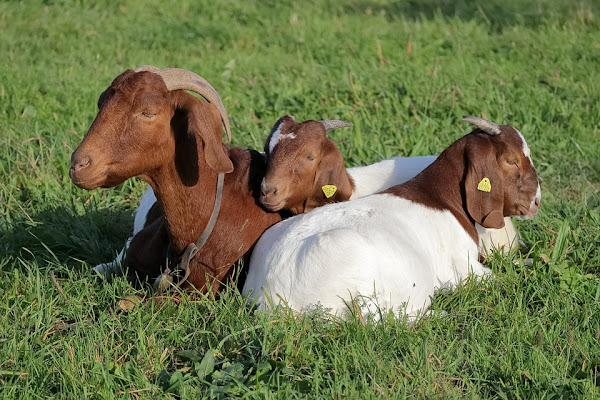
How To Start Goat Farming Business?
Starting a goat farming business is relatively easy and simple. Even the beginners can also raise some goats. Although, we recommend having practical knowledge and completing training on goat farming system before starting this business commercially. For starting and maintaining a profitable and successful business, you must have to make a proper and effective goat farming business plan and do everything according to the plan. Here we are shortly describing the necessary steps for starting goat farming business.
Step 1: Try to Learn Practically
First of all, we are recommending you to learn more about goat farming business practically by visiting some farms within your area. Having practical knowledge is very important for managing your goat farm perfectly. So, try to visit as many farms as you can within your area, and learn more about this business. Talk with the existing farmers and ask them important questions related to this business. Don’t ignore this part, because doing this is very important.

Step 2: Complete Training
Starting a small scale goat production business doesn’t require any training. But for commercial production, we always recommend completing a short or full training. Learning from existing farmers is also a very good option. Actually practical experience is much more important than book knowledge. Today, there are many government or private NGO available throughout the world who are providing training facilities and other supports for starting and operating this business. You can also contact your local agriculture extension office to learn more about the availability of goat farming training in your area.
Step 3: Check Local Zoning Regulations
You can’t start a goat production business if there are any local zoning regulations, especially if you live in an urban area. So, you have to check your local zoning regulations by contacting the nearest zoning board, building inspector, or other regional government office. Check whether there are any limits for the farmers to certain goat breeds, ban only uncastrated male goats, or any other limitations. You may need to obtain permits and licenses to start your goat farming business in some areas. Regulations and requirements may vary by state and country, so it’s essential to research and comply with local laws and regulations.
Step 4: Make a Good and Effective Business Plan
Making an effecting business plan is very important for successful goat farming business. A viable business plan helps to run the farm smoothly and also ensures maximum profits from your production business. You can ask for help from an expert for making an excellent goat farming business plan. Try to include everything in your business plan from starting to marketing.

Step 5: Select a Good Location For Your Goat Farm
Good location selection is also very important. Always try to select a suitable farm land/area for your business that has all required facilities for successful goat farming business. The necessary facilities for goat farming business includes the followings.
- Great source of fresh and clean water supply.
- Availability of all types of equipment.
- Easily available food source.
- Fertile field for crop, grasses and other green plant production. Feeding green food keeps the animal healthy, productive and reduces feeding costs.
- Availability of full time labor.
- Good transportation and veterinary service.
- A market near the farm land so that you can sell your products easily and buy necessary commodities.
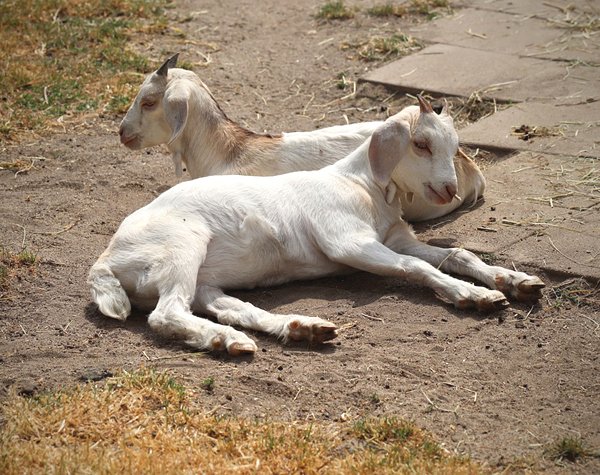
Step 6: Determine the Products You Want to Produce From Your Goat Farm
Goats are raised for many different purposes. For example, they are raised for meat, milk, fiber and skin production. And also for producing fancy goats for raising as pets. So, determine your production purpose first, before starting this business. A good and clear plan will help you later.
Step 7: Select Right Goat Breed
After determining the products you want to produce from your goat farm, you have to choose the right goat breeds for your specific production type. There are actually different types of goat breeds available around the world for rearing in the goat farm like Pygmy goats, Dwarf goats of Nigeria, Cashmere goats, Black Bengal goat, Mountain goats, Boer goats etc.
Some of the available goat breeds are famous for tasty and nutritious meat and some breeds are famous for milk production. Some Indian goats are also highly meat and milk productive. Pygmy goats originated in Africa. They are good as pets and mainly used in the program and goat show. A lot of people rear them as pet instead of meat and milk production. Nigerian dwarf goats and pygmy goats are of the same origin. Dwarf goats are of different colors like black, chocolate, gold, color, etc. Wide variety of colors is a major factor that makes them so popular.

Dairy goats are raised mainly for commercial milk production or for family milk consumption. They can also be displayed at trade shows. According to the association of dairy goats Nubians, Lamanchas, Alper, Oberhasli, Saanen and Togenburgs are the world famous dairy goat breed. Cashmere goats are popular for wool production. Mountain goats are blunt, square looking covered with soft white, woolly, dense undercoat.
Boer goats originated in South Africa and suitable for highly meat production. Some studies say that Boer goats are very expensive and demand exceeds supply which attracts investors. However, choosing the right breeds for commercial goat farming will ensure high profit. Choose proper breed according to your desired production and geographical location. You can also visit some of your nearest goat farm or livestock training center to learn more about the suitable goat breeds in your area.
Step 8: Purchase Good Quality Animals
Good quality animals ensure good growth and maximum production. So, you have to purchase good quality and healthy animals for starting your farm from reputable breeders. You should always consider purchasing goats from your local suppliers. Check for detailed breeding history, breed specific traits and current health conditions. You can ask for help from an expert for purchasing good quality animals, especially if you are a beginner in this business.
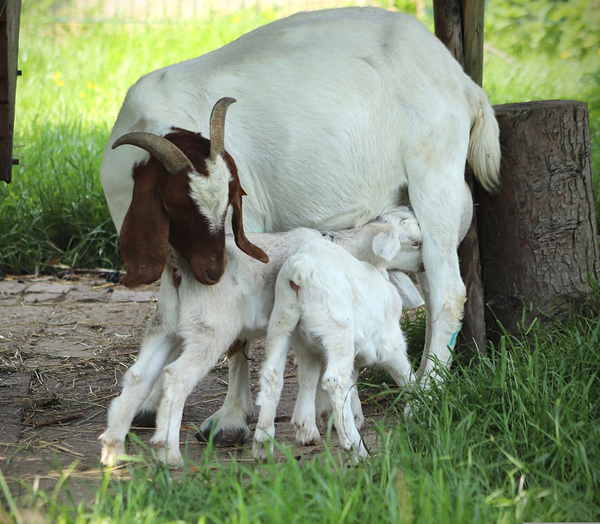
Step 9: Purchase All Required Equipment
Like many other livestock farming business, you need some equipment and basic supplies for starting and operating your goat farm successfully. Here is a complete list of equipment required for commercial goat farming business:
- Fencing
- Shelter
- Stalls
- Feeders
- Waterers
- Hay storage
- Catching panels
- Hoof trimmers
- Scales
- Milking equipment
- Wheelbarrow
- Pitchfork
- Muck rake
- First-aid kit and
- Record-keeping tools
Step 10: Make a Good House/Shelter for Your Goats
Housing is an important factor for profitable goat farming business. Small scale farmer generally keep their goats with their other livestock animals. But for commercial production, a good quality goat housing system is highly recommended for better production. A good house not only give shelter and protects the goats from predators but also prevent them from various types of goat diseases. Always keep the house neat, clean and dry. Make proper ventilation and drainage system inside the house. Also ensure the availability of sufficient fresh air and light inside the house. Housing and goat farm design are of various types according to the production type and breed.

Step 11: Ensure Good Fencing
Goats are notorious escape artists, and they need a well-constructed fence to prevent them from wandering off. So, make a sturdy fence and it should be at least four feet high and free of gaps and sharp edges that could harm the animals. Electric fencing is also an effective way of keeping goats within a designated area. Ensure availability of enough space inside the fence to move around and exercise. Overcrowding can lead to stress, disease, and other health problems. Generally, each adult goat require at least 15 to 20 square feet of space. Kid goats and pregnant goats may need more space.
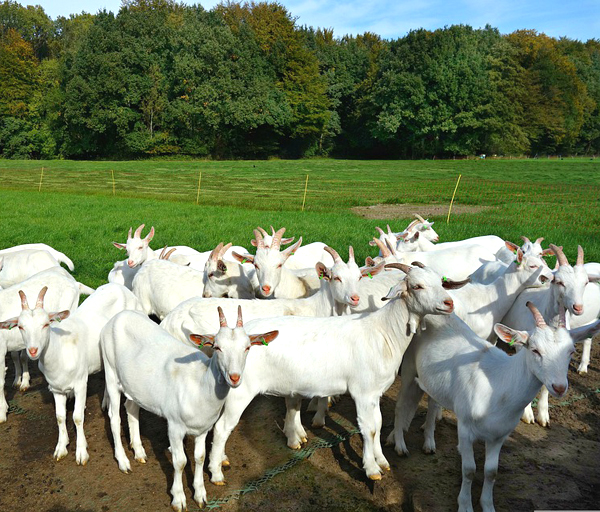
Step 12: Feed Your Goats With High Quality and Nutritious Food
This is another most important part of a successful goat farm. Well goat feed management is very essential for commercial goat farming business. So, you have to ensure good and nutritious food for your goats for their good health and better production. Usually goats prefer to eat grasses, plants, shrubs, weeds and herbs. Besides those feeds, goat also need energy, portion, vitamins, fiber and water for proper growth and for making better profits from this business. It will be better if you have sufficient knowledge about what to feed goats. Along with good quality and nutritious feeding, goats also require lots of clean and fresh drinking water. So, ensure the availability of enough clean and fresh water.
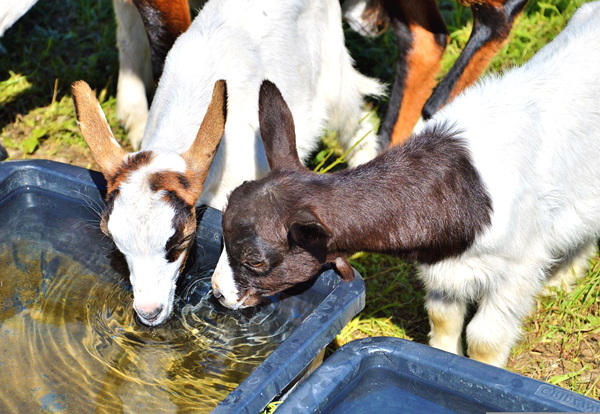
Step 13: Keep Good Ratio of Does and Bucks for Successful Goat Breeding
Goats are naturally very good breeders. So, you don’t have to worry much about breeding your goats. Your goats will breed easily and will produce kids if you keep good ratio of bucks and does in your flock. Generally one mature buck is enough for breeding 25 to 30 does. Breeding season vary depending on the variety or breeds. Some goat breed breed and produce kids throughout the world. And some breed produce kids once a year.
Step 14: Always Try to Take Good Care of Your Goats
Always try to take good care of your goats. Never feed them contaminated food or polluted water. Keep their house as much neat and clean as possible. And clean their house on a regular basis. For commercial production, keep kids, bucks and does separated for each other. Take extra care to the breeding bucks, kids and pregnant does. Keep the kids with their mother for several weeks after their birth.
Avoid using same buck for mating with numerous does at same day. Artificial insemination is also a great way for breeding your does. Vaccinate them timely, for keeping them free from all types of diseases and health problems. If possible, stock some necessary vaccines and medicines and keep good relation with a veterinary doctor.
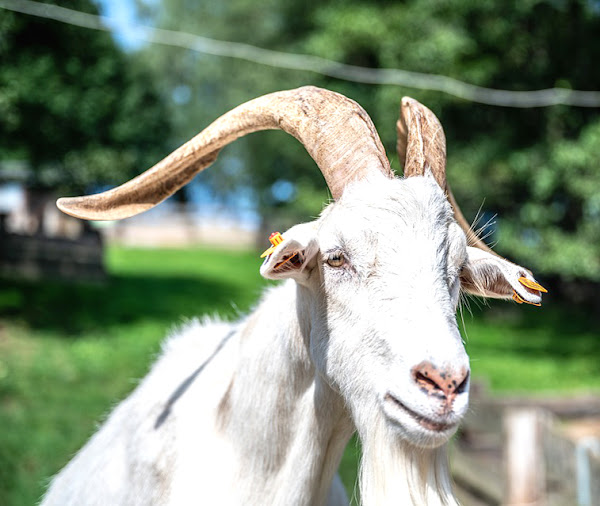
Step 15: Learn About Different Goat Diseases and Their Prevention
Goats are hardy animals, but they are still susceptible to various diseases that can affect their health and productivity. As a goat farmer, you have to understand the different types of goat diseases that can affect your herd and how to prevent them to keep them healthy.
- Pneumonia: One of the most common goat diseases is pneumonia, which is caused by a bacterial infection that affects the respiratory system. Pneumonia can be prevented by ensuring that your goats are kept in a well-ventilated area and by vaccinating them against the disease.
- Foot Rot: Another common disease that affects goats is foot rot, which is caused by bacteria that thrive in wet and muddy conditions. To prevent foot rot, make sure that your goats have access to clean and dry bedding and avoid keeping them in areas with muddy conditions.
- Contagious Ecthyma or Goatpox: One of the most serious diseases that can affect goats is contagious ecthyma, also known as goatpox. This viral infection is highly contagious and can cause severe illness and even death. It can be prevented by vaccinating your goats and ensuring that they are kept in clean and hygienic conditions.
- Mastitis: Other common goat diseases include mastitis, which is an infection of the udder, and coccidiosis, which is caused by a parasite that affects the intestinal tract. These diseases can be prevented by maintaining good hygiene practices, providing clean water and feed, and ensuring that your goats receive regular veterinary care.
It is also important to recognize the symptoms of diseases or illness in your goats. Some common signs of illness include loss of appetite, lethargy, diarrhea, and respiratory distress. If you notice any of these symptoms in your goats, it is important to consult with a veterinarian as soon as possible.
Step 16: Vaccinate Your Goats Timely
Various types of viral diseases like PPR, goat pox, foot and mouth diseases and bacterial diseases like anthrax, brucelosis etc. are very harmful for goats. So, proper vaccination is a must to prevent this types of diseases. The does which was not vaccinated PPR, goat pox, brucellosis vaccines previously, vaccinate them at the fifth month of gestation period. Vaccinate the kids PPR vaccine when they reach 5 months of age. Always take good care of your animals and vaccinate them timely to prevent unwanted health hazard and diseases. See the chart below.
| Vaccine Name | Applying Rate | Applying Method |
| PPR | 1 ml | Injection Under Skin |
| Foot & Mouth Disease | 2 ml | Injection Under Skin |
| Anthrax | 1 ml | Injection Under Skin |
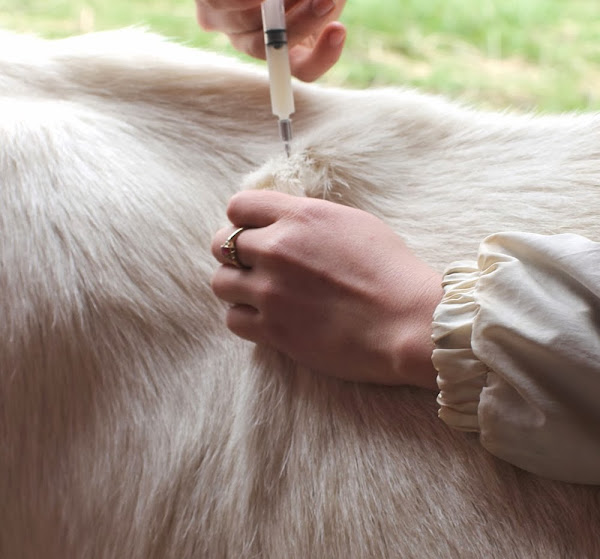
Step 17: Determine Your Marketing Strategies
Determining the marketing strategies for selling your products. Actually, marketing is the most important but easiest step of goat farming business. Goat products like meat and milk has a huge local and global demand and popularity. Almost all types of people like goat milk and meat. So, a good market is already available in almost every place of the world. You can easily sell your products in your nearest market. Commercial producers can target the international market and export the products in foreign countries.
These are the common steps and ways for starting and operating a successful goat farming business. Hope this detailed guide has helped you! Good luck and may God bless you!

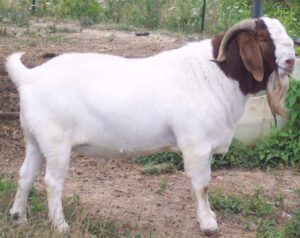
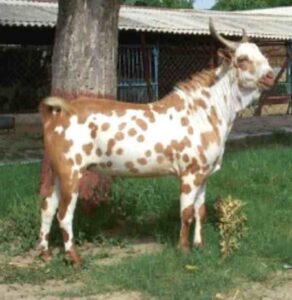
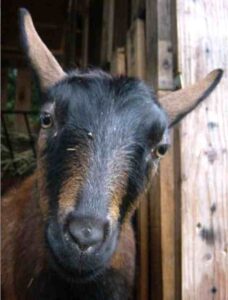
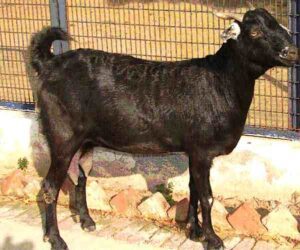
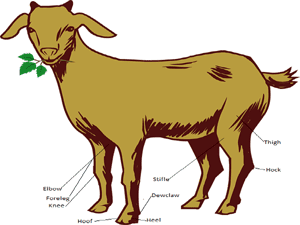
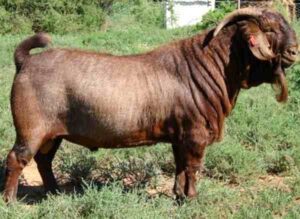
I wanted to start goat business, but I do not have enough funds. Furnish me with more governmental loans knowledge. I wanted to start big.
Where are you from? Governmental loans are available in many countries for starting commercial goat farming business. Thank you!
Thanks for the great information. I am interested in beginning with high milking goats that do not have distinct flavor/smell in the milk. I also want to keep them on zero grazing, and keep very few like three for i have no land for pasture, stay in urban area in Uganda.
Need support on which milking goat can suit Uganda- central region climate please recommend a bleed that will give me high milk yield and survive the tropical hot climate,
How do I get the goat, do you know any farmer from my country
Please consult your local farmer. Or contact with your local livestock department. Good luck!